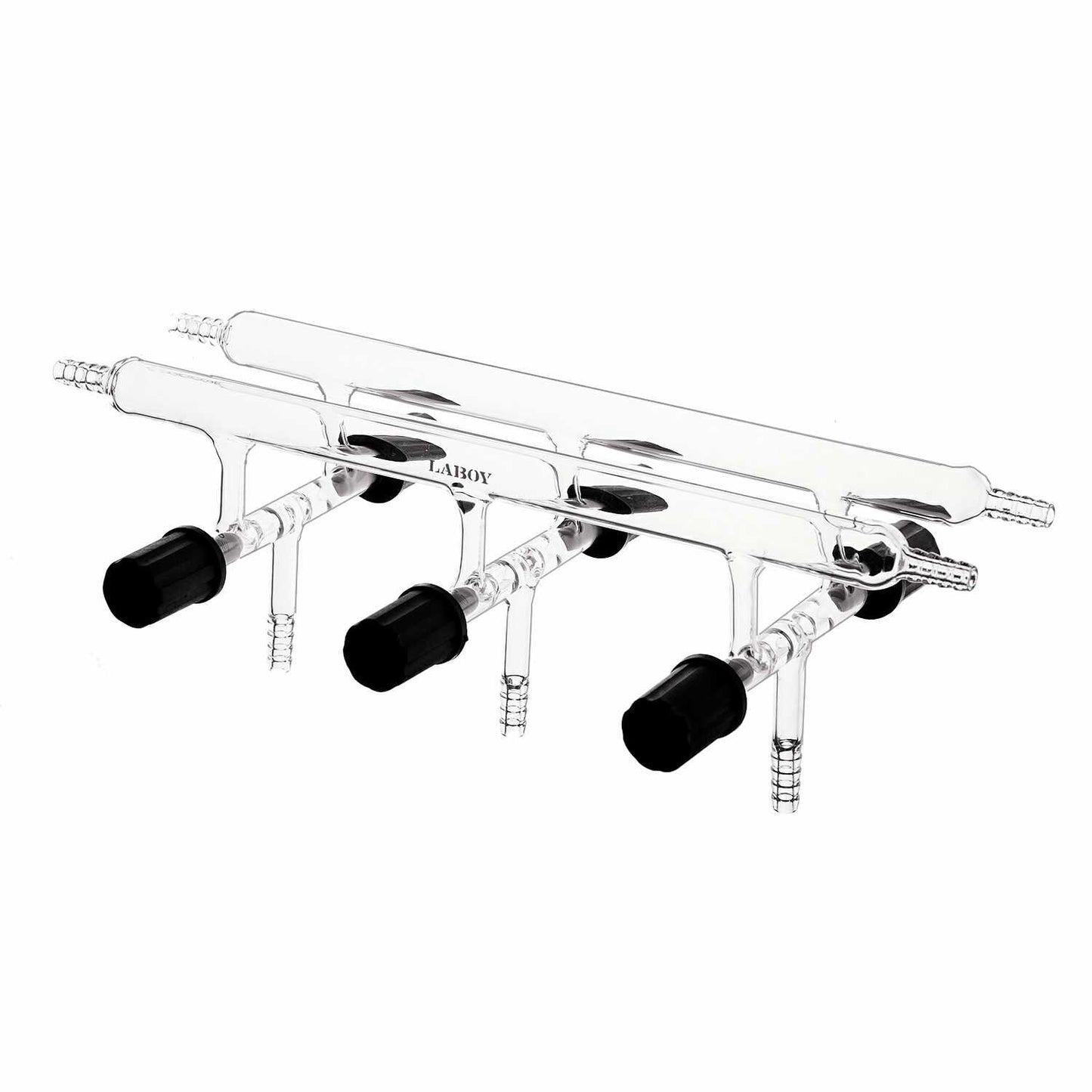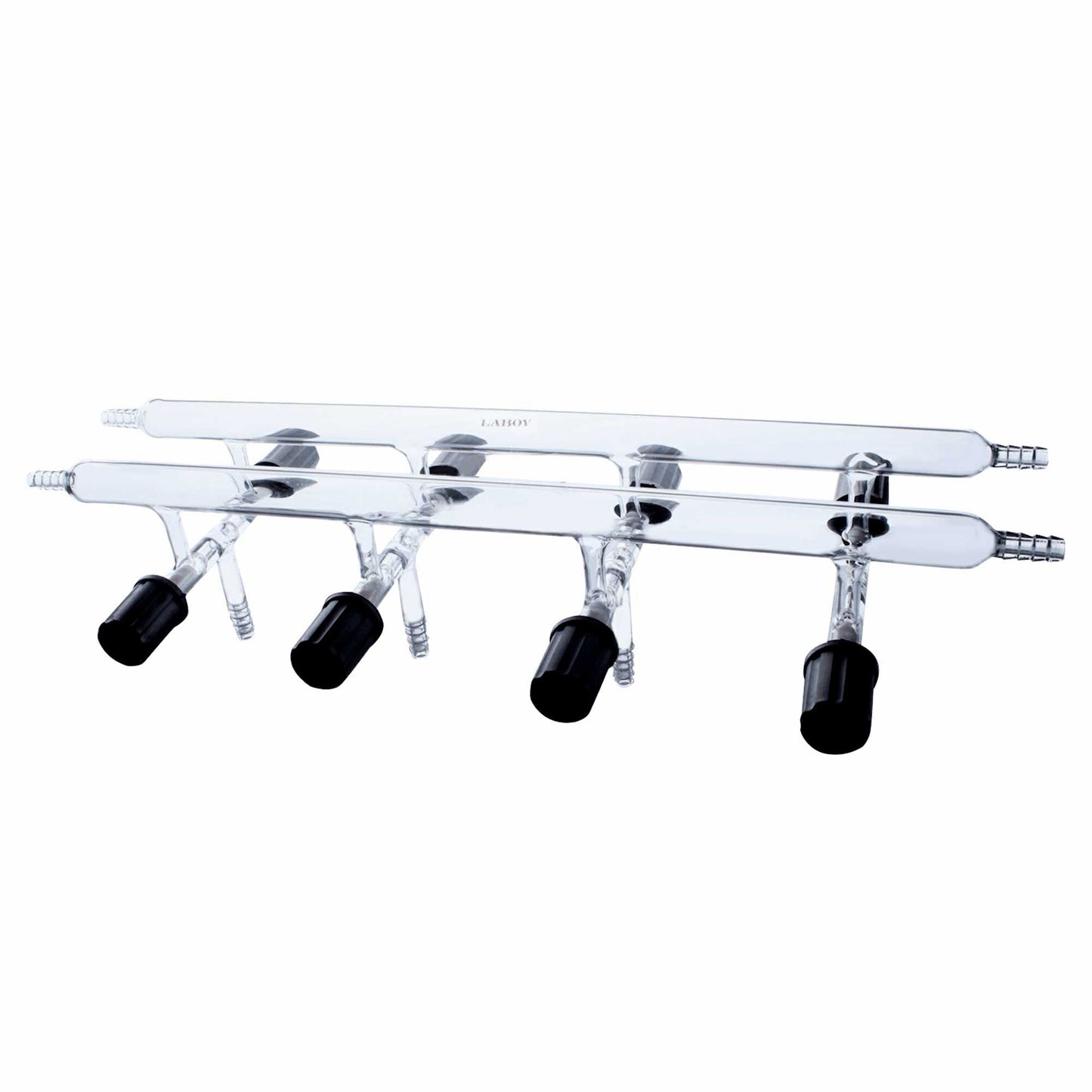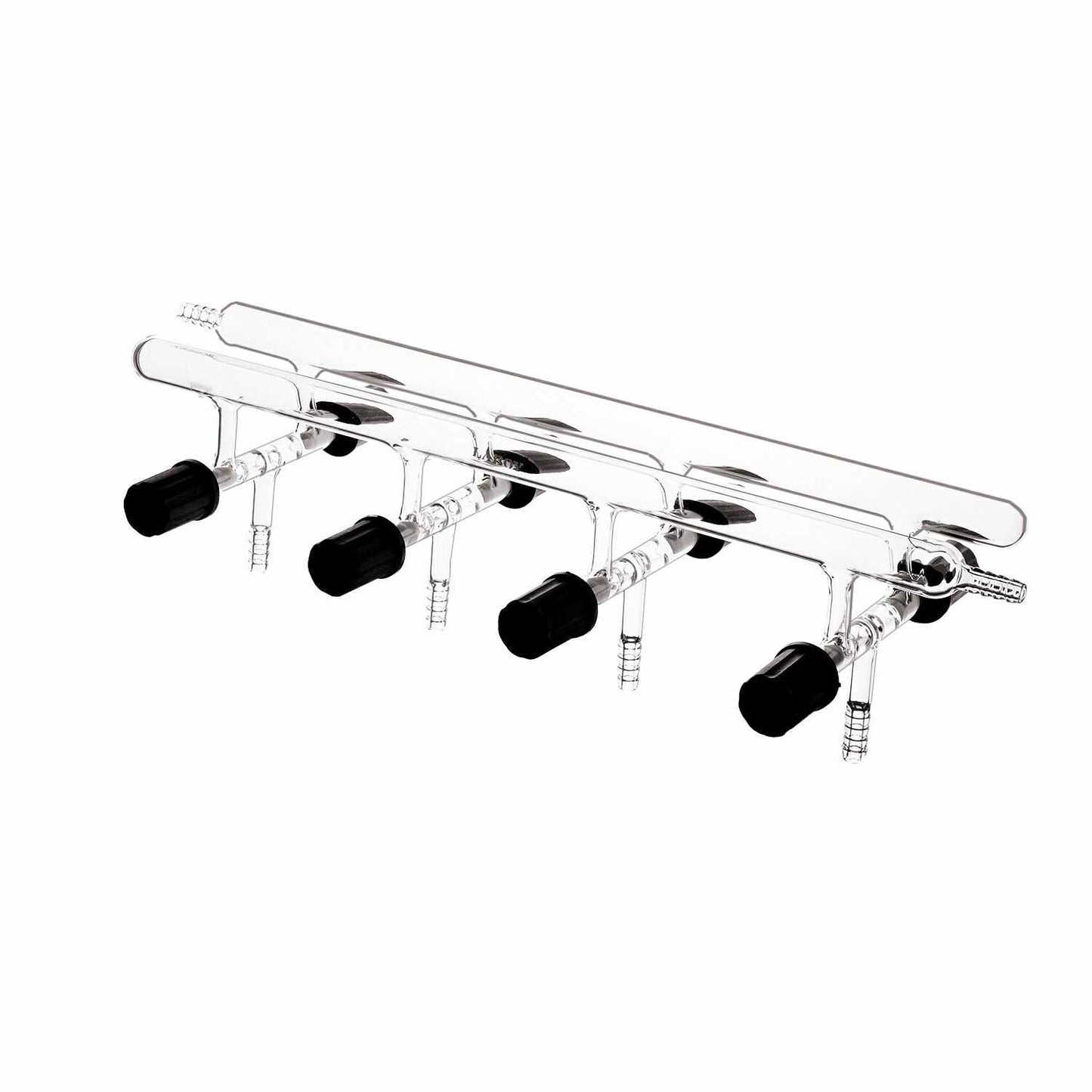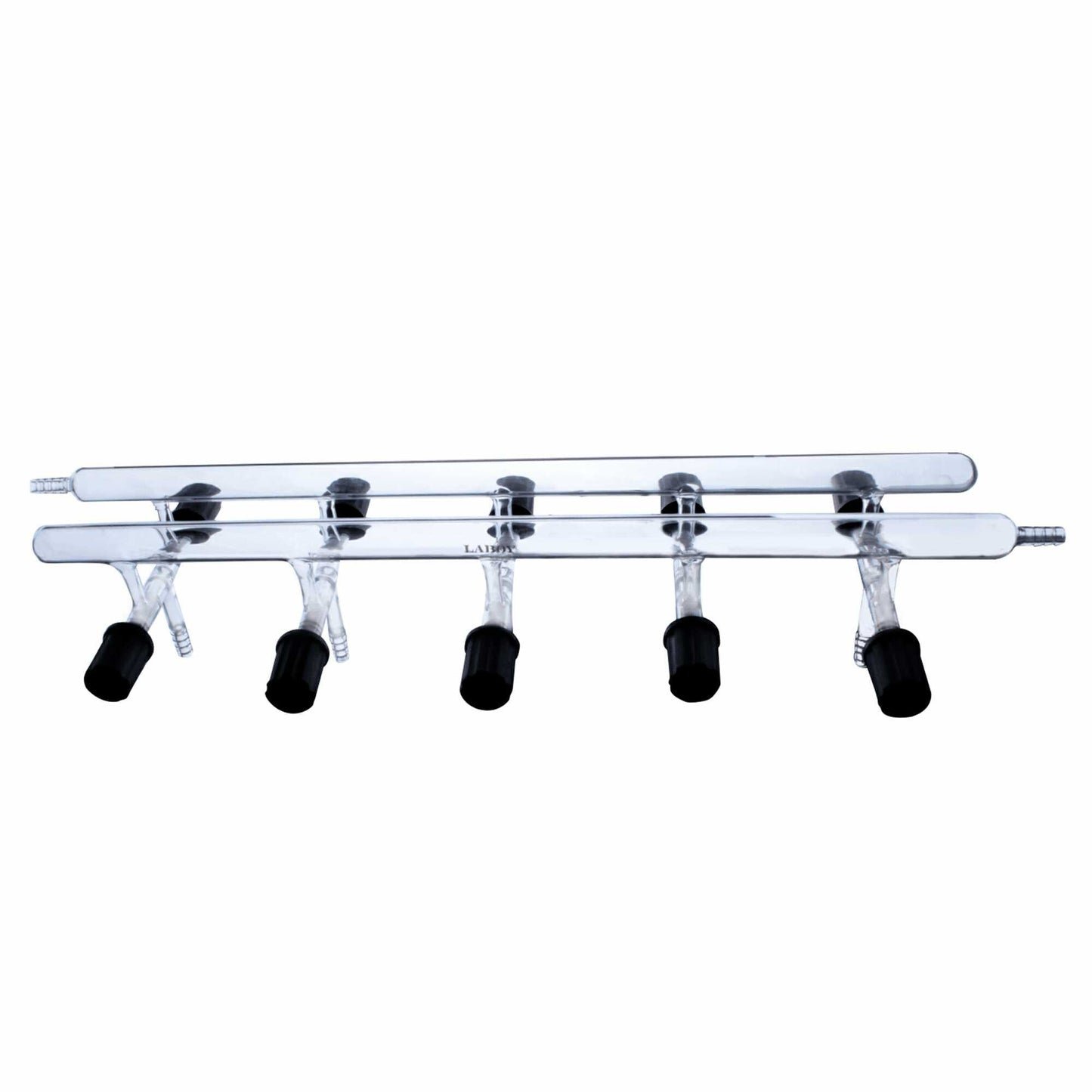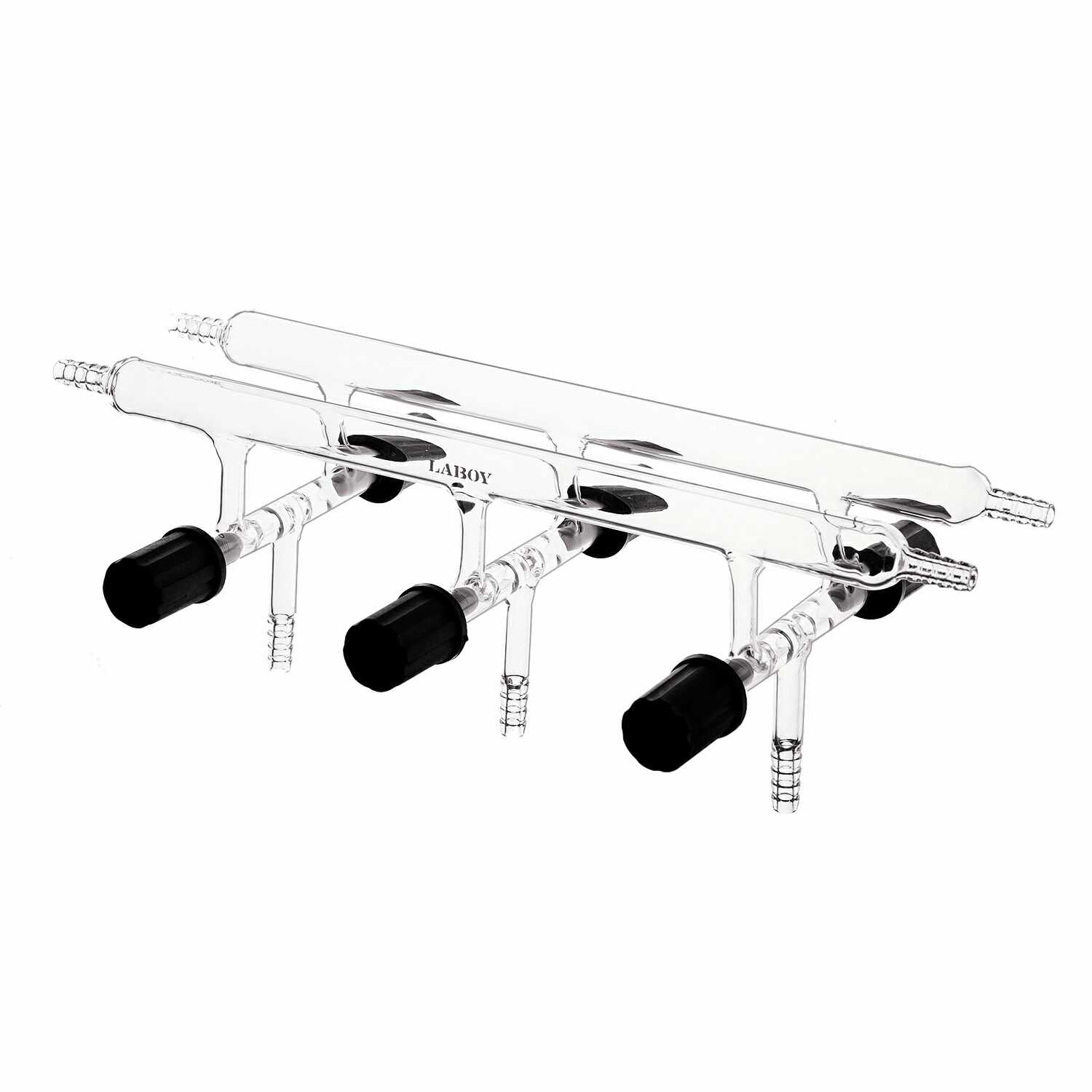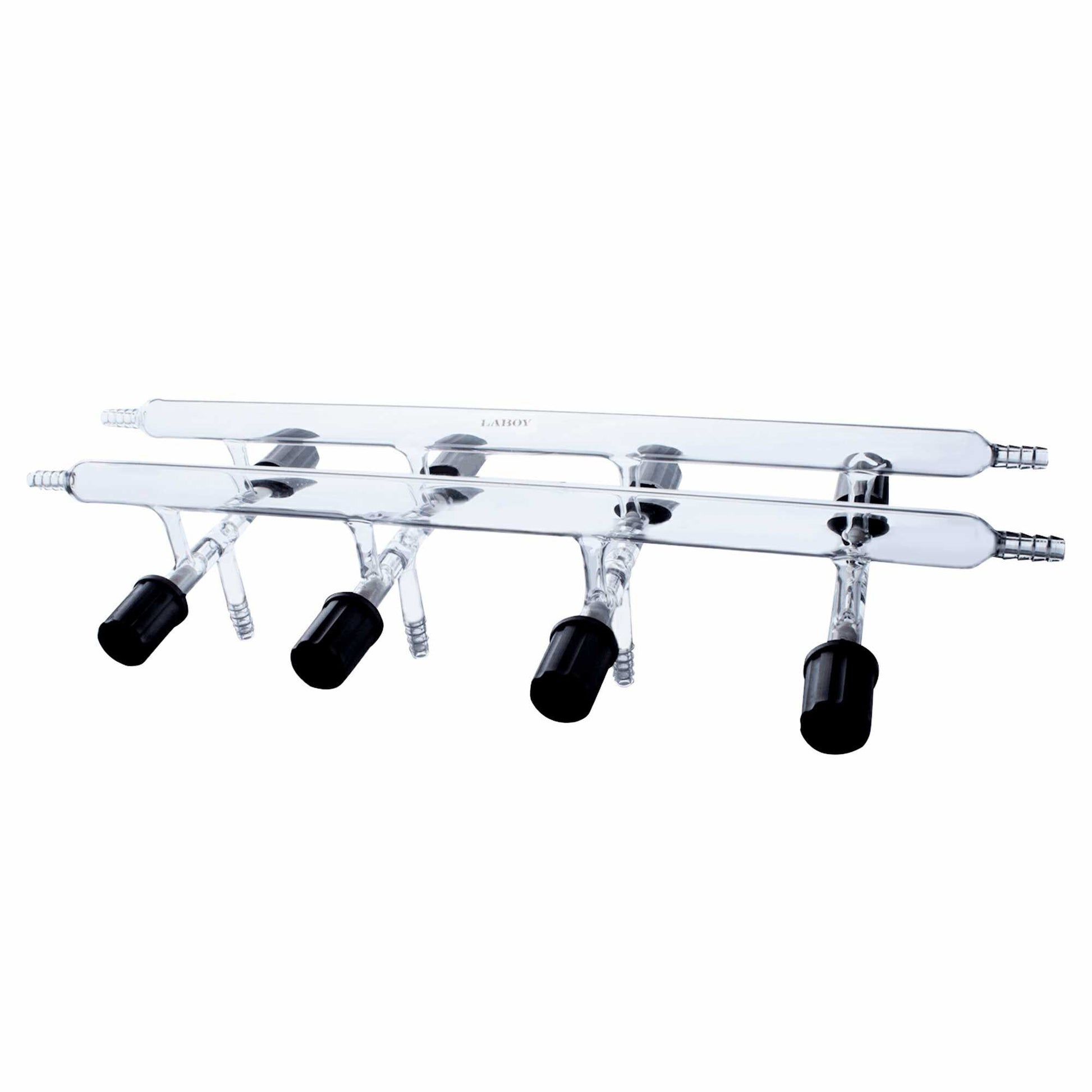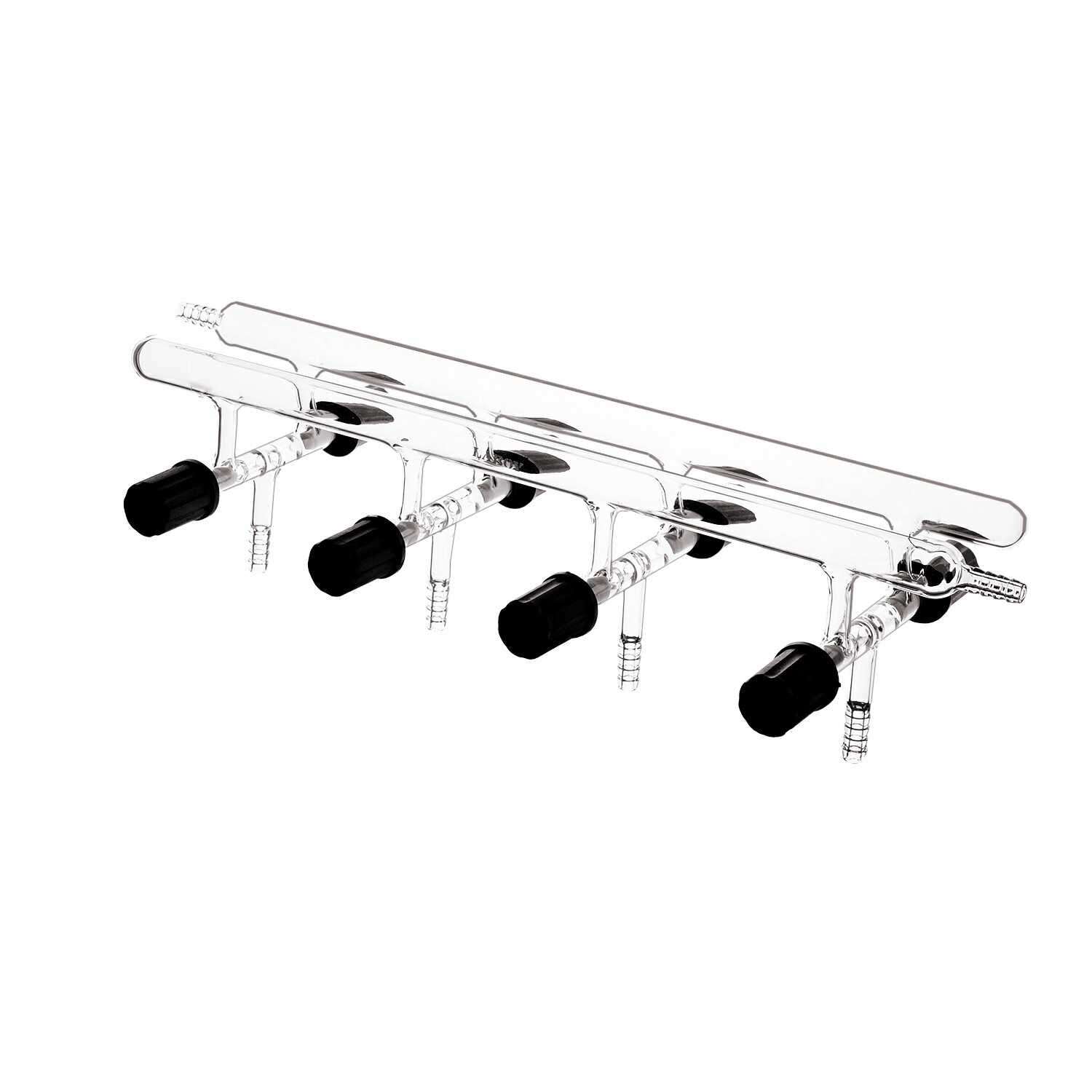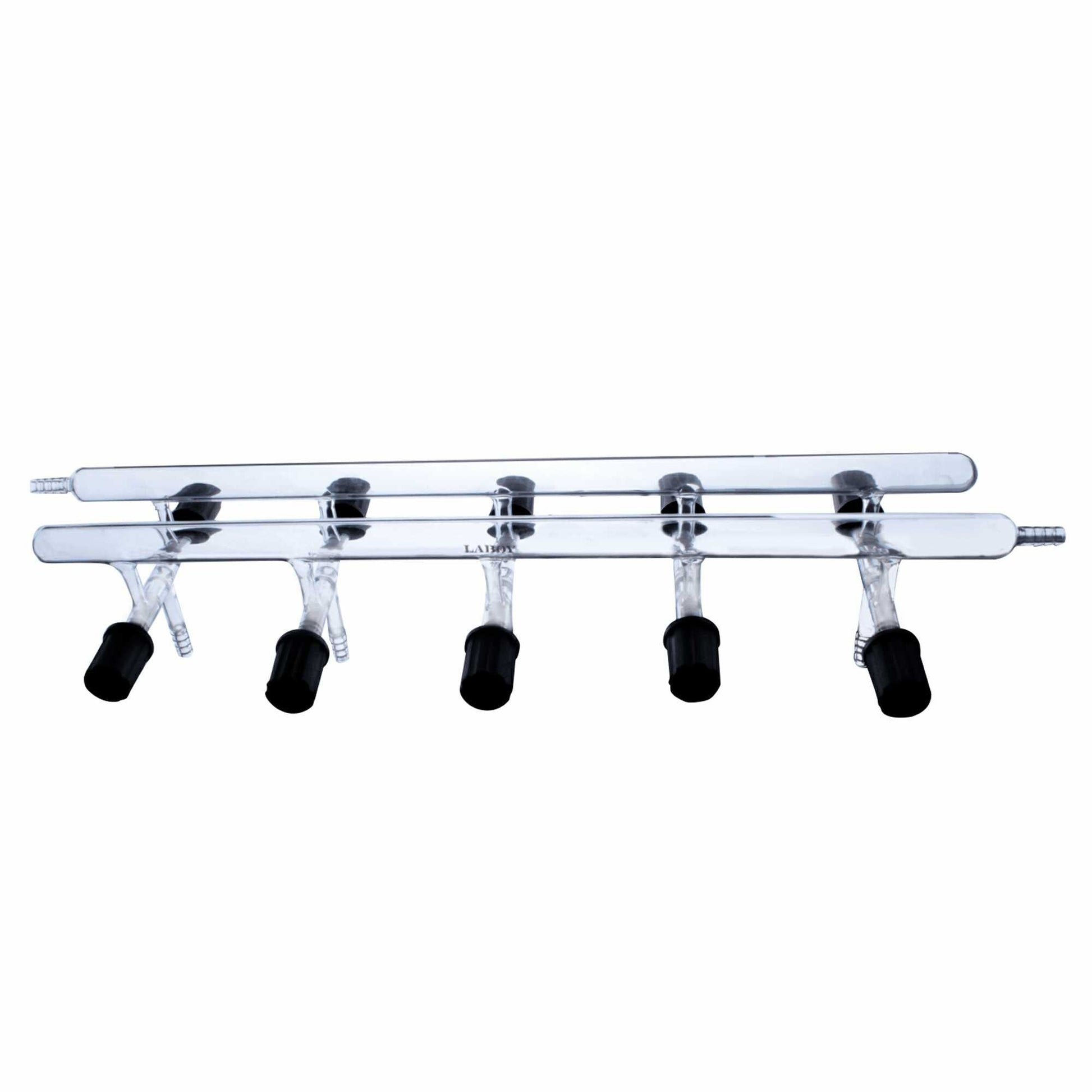Laboy Glass
Glass Double Manifold with High Vacuum Valve - Versatile Schlenk Line Apparatus
Glass Double Manifold with High Vacuum Valve - Versatile Schlenk Line Apparatus
Couldn't load pickup availability
- Versatility: The double manifold with high vacuum valve is designed for use with both vacuum and inert gas.
- High vacuum valve: The 0-4mm high vacuum valve, located at the base of the double manifold, provides a reliable seal when closed to prevent air and moisture from contaminating the reaction vessel during evacuation.
- Multiple ports: Available in three design options with 3, 4, or 5 ports, the double manifold allows for connections to various components of the Schlenk line setup, spaced 100mm center to center.
- Open serrated hose connections: The ports feature open serrated hose connections with an O.D. of 10mm at the largest serration, and customers can choose the direction of hose opening to suit their experimental needs.
- High-quality material and craftsmanship: Laboy Glass uses high-quality borosilicate glass that is hand-blown and annealed at 800 degrees Celsius to increase strength and durability. The double manifold also features a heavy wall design with uniform wall thickness.
- Guarantee: Laboy Glassware comes with a 100% 40-day money-back guarantee. If customers are not satisfied with their purchase, they can return the flask for a full refund, no questions asked. In addition, if the flask arrives broken due to shipping, Laboy Glass will replace it or offer a full refund.
The double manifold or vacuum gas distributor is an important component of the Schlenk line, which allows for the controlled introduction of gases such as nitrogen, argon, or hydrogen into the reaction vessel. This component usually consists of two or more gas lines, which can be independently controlled and are used to deliver different gases or to regulate the pressure of the gas being introduced into the system.
The double manifold is often used in conjunction with other Schlenk line components such as a vacuum trap, a pressure equalizing addition funnel, or a Schlenk flask. Its precise use depends on the specific experimental setup and the requirements of the reaction being carried out.
A double manifold with a high vacuum valve is a type of Schlenk line apparatus that allows for the control of both high vacuum and gas flow into a reaction vessel.
The high vacuum valve is typically located at the base of the double manifold and is used to regulate the level of vacuum in the system. The valve is designed to provide a tight seal when closed, preventing air and moisture from entering the reaction vessel during evacuation. When the valve is opened, the vacuum is released, allowing for the introduction of gases or other reagents into the reaction vessel.
The double manifold portion of the apparatus contains multiple ports, this design of this product includes three options of 3 ports, 4 ports and 5 ports, each of which can be connected by open serrated hose connection (customer may choose the direction of hose opening) to different components of the Schlenk line setup, such as a vacuum trap, a pressure equalizing addition funnel, or a reaction flask. The gas lines attached to the double manifold allow for the introduction of gases such as nitrogen, argon, or hydrogen into the reaction vessel under inert conditions.
The combination of the double manifold and high vacuum valve allows for precise control over the reaction environment, ensuring that reactions can be carried out under optimal conditions without being compromised by air or moisture. This type of Schlenk line setup is commonly used in the synthesis of air- and moisture-sensitive compounds, and can be customized to meet the specific needs of different experimental setups.
Share
